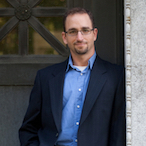If you pass warm surface water through heat exchangers to boil an enclosed refrigerant, it can be passed through a turbine to create electricity. To turn that refrigerant back to liquid, you run cooler water through the exchanger. Wash, rinse, repeat. It's not rocket science, but costs, technical challenges and environmental risk have impeded the progress of this technology, referred to as Ocean Thermal Energy Conversion, or OTEC. Lockheed Martin has partnered with Makai Ocean Engineering to advance this technology in Hawai'i. One of the key challenges, as you can likely imagine, is to create and install a pipe of 1,000 meters length that can draw cold, nutrient rich waters to the surface and discharge it….and to withstand corrosion, a hurricane or a tsunami.
The long term goal of the collaboration is to advance OTEC. The short term goal is to prove the pilot program enough to draw the investment dollars needed for a 100 MW plant.
Technical challenges abound. For instance, titanium heat exchangers can last the lifetime of the OTEC power plant (roughly 50 years), whereas aluminum heat exchangers would need to be replaced every 10 years. The financial comparison shows that because aluminum is cheaper, and given the time value of money, it shows a better ROI to do five aluminum replacements rather than one titanium, according to Michael Eldred of Makai Ocean Engineering. There are also issues due to the highly corrosive nature of sea water, and the challenges of water at different temperatures and pressures.
But the potential is enormous. First proposed in 1881 by J. D'Arsonval, OTEC can provide not just highly valued clean, renewable, and limitless base load power, as well as desalination of water, application for cooling of buildings that can potentially replace air conditioning, lithium harvesting, and aquaculture opportunities, given the nutrient-rich water brought up from the deep. One of the neatest examples of OTEC in practice today is NELHA, on the big island of Hawai'i. NELHA is proving the technology effective for reliable base load power, as well as a way to farm lobster and many other deepwater species in on-shore ponds. In Honolulu, according to Eldred, the company is at the permitting phase in a seawater air conditioning system. Visual impacts can be alleviated with subterranean pipes coming and going. once the regulations and permitting is finished for Honolulu, the path will be paved for Waikiki as well.
-----------------------------------------------------------------------
Scott Cooney is the developer of a new Triple Bottom Line, Monopoly-esque board game, and the author of Build a Green Small Business (McGraw-Hill).
Follow Scott's company, GreenBusinessOwner.com, on Twitter: Twitter.com/GreenBizOwner
photo courtesy USPACIFICFLEET on Flickr Creative Commons

Scott Cooney, Principal of GreenBusinessOwner.com and author of Build a Green Small Business: Profitable Ways to Become an Ecopreneur (McGraw-Hill, November 2008), is also a serial ecopreneur who has started and grown several green businesses and consulted several other green startups. He co-founded the ReDirect Guide, a green business directory, in Salt Lake City, UT. He greened his home in Salt Lake City, including xeriscaping, an organic orchard, extra natural fiber insulation, a 1.8kW solar PV array, on-demand hot water, energy star appliances, and natural paints. He is a vegetarian, an avid cyclist, ultimate frisbee player, and surfer, and currently lives in the sunny Mission district of San Francisco. Scott is working on his second book, a look at microeconomics in the green sector. In June 2010, Scott launched GreenBusinessOwner.com, a sustainability consulting firm dedicated to providing solutions to common business problems by leveraging the power of the triple bottom line. Focused exclusively on small business, GBO's mission is to facilitate the creation and success of small, green businesses.














